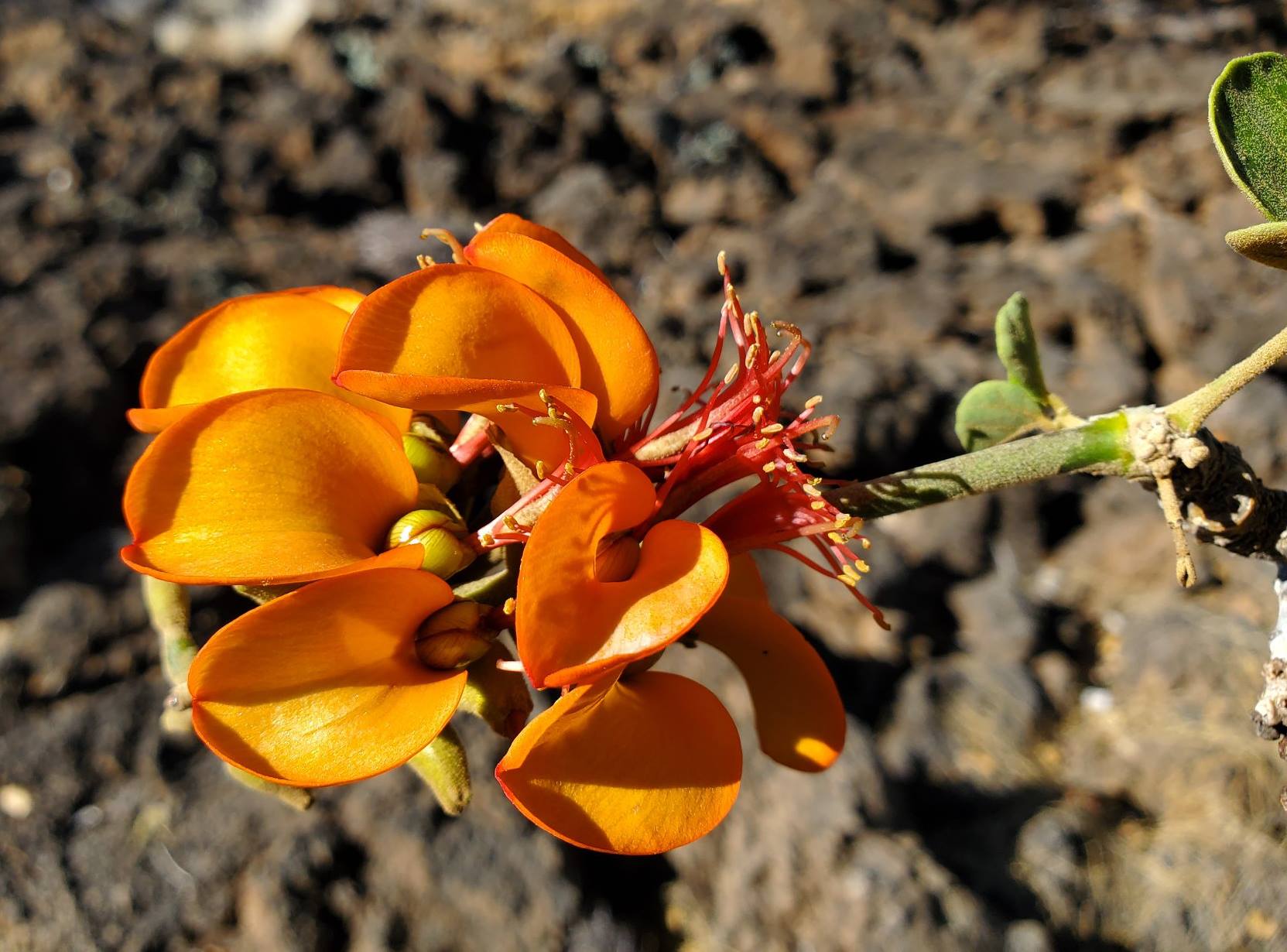The wiliwili is an iconic tree of the native lowland dry forests of Hawai‘i. The wiliwili is one of Hawai‘i’s few endemic deciduous trees and will typically lose their leaves in the summer months, during periods of drought, before flowering in late summer. The flowers appear along a raceme (or a cluster of flowers along a central stem). The flowers at the base of the raceme open first and work their way open towards the end. The unopened flower buds are tomentose, or covered in tiny hairs, giving it an almost felt-like appearance. The name wiliwili means twisty-twisty and may refer to the seed pod twisting open when the seeds are ready for dispersal. The trees make bright red-orange seeds and are easy to germinate and grow. Throughout the leeward coasts of Hawai‘i these beautiful trees stand out amongst the landscape and give us a glimpse into the forests of the past.
Mature trees stand 20-30’ tall with a 20-30’ canopy, making them wonderful specimen species when grown at home. Very tolerant to drought, and requiring very little water once established, the wiliwili tree is yet another plant that is perfect for the xeric (drought resistant) landscape.
The wood of the wiliwili is exceptionally lightweight when dry and is an important material in Hawaiian culture and is sometimes used for the ama or outrigger in traditional canoes. Additionally, some of the earliest surfboards were made from wiliwili.
As referenced in an ‘ōlelo no‘eau: “Pua ka wiliwili nanahu ka manō” It is said that when wiliwili are blooming in the fall, sharks are biting as it lines up with their mating season.
Resources:
- Pukui, M. K. (1983). ‘Ōlelo No‘eau Hawaiian Proverbs & Poetical Sayings. Honolulu, Hawaii: Bishop Museum Press.


